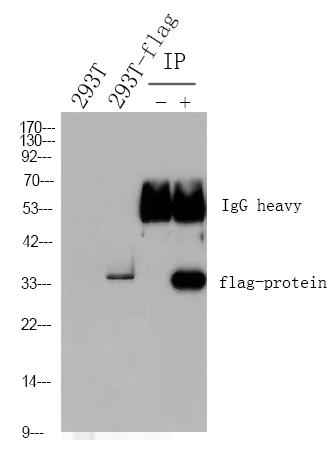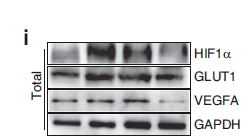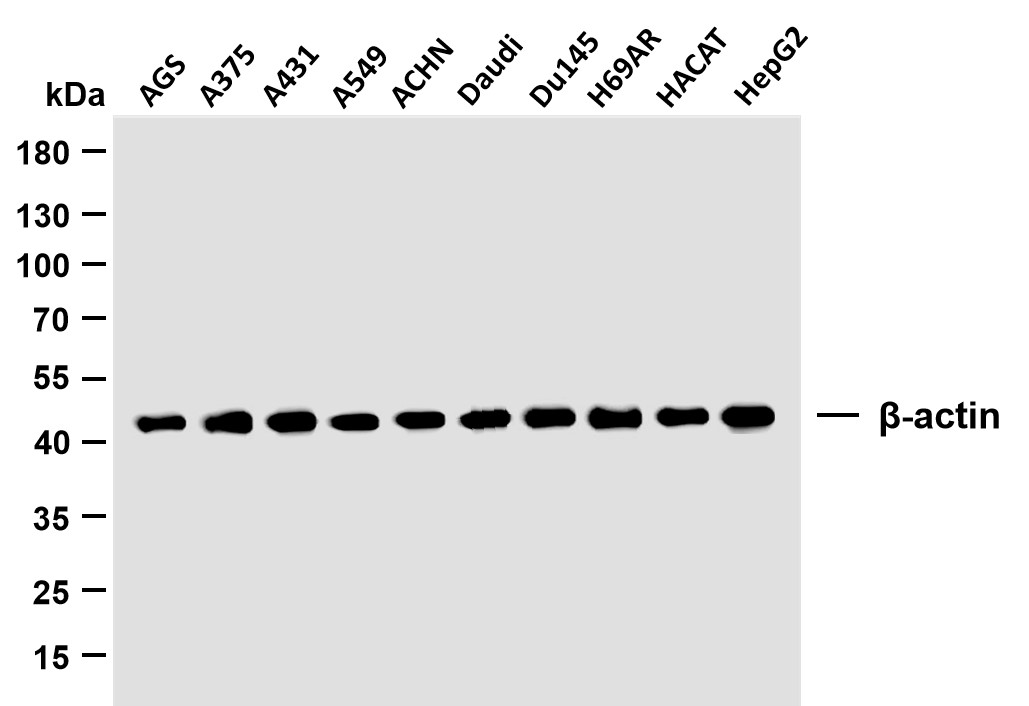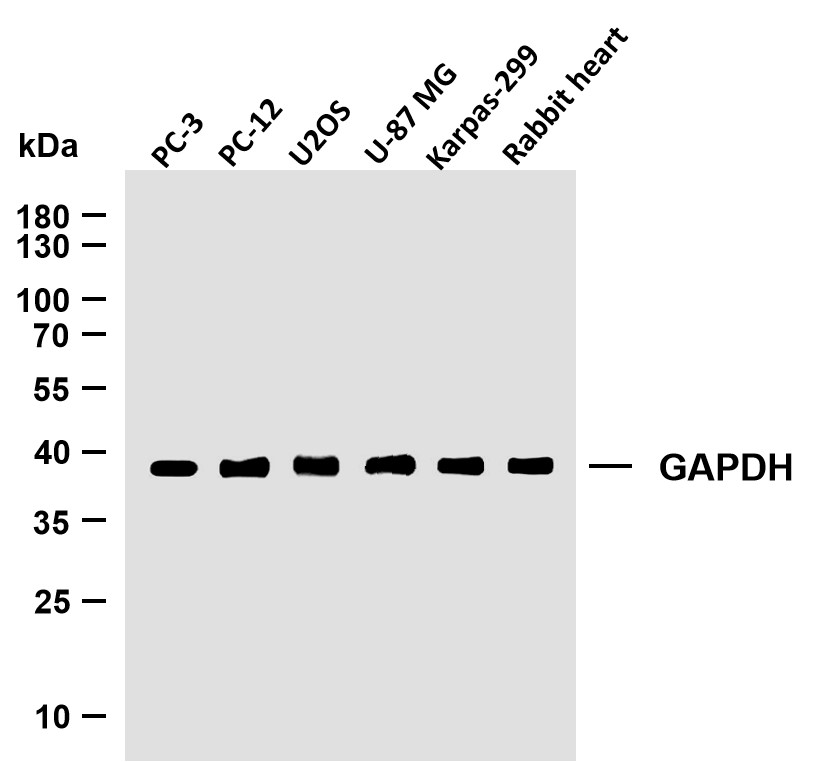
Catalog: YN1516
Size
Price
Status
Qty.
200μL
$450.00
In stock
0
100μL
$280.00
In stock
0
40μL
$150.00
In stock
0
Add to cart


Collected


Collect
Main Information
Target
UTRO
Host Species
Rabbit
Reactivity
Human, Mouse
Applications
WB, ELISA
MW
94kD (Observed)
Conjugate/Modification
Unmodified
Detailed Information
Recommended Dilution Ratio
WB 1:500-2000; ELISA 1:5000-20000
Formulation
Liquid in PBS containing 50% glycerol, and 0.02% sodium azide.
Specificity
VPP2 Polyclonal Antibody detects endogenous levels of protein.
Purification
The antibody was affinity-purified from rabbit antiserum by affinity-chromatography using epitope-specific immunogen.
Storage
-15°C to -25°C/1 year(Do not lower than -25°C)
Concentration
1 mg/ml
MW(Observed)
94kD
Modification
Unmodified
Clonality
Polyclonal
Isotype
IgG
Related Products
Antigen&Target Information
Immunogen:
Synthesized peptide derived from part region of human protein
show all
Specificity:
VPP2 Polyclonal Antibody detects endogenous levels of protein.
show all
Gene Name:
ATP6V0A2
show all
Protein Name:
V-type proton ATPase 116 kDa subunit a isoform 2 (V-ATPase 116 kDa isoform a2) (Lysosomal H(+)-transporting ATPase V0 subunit a2) (TJ6) (Vacuolar proton translocating ATPase 116 kDa subunit a isoform 2)
show all
Background:
The protein encoded by this gene is a subunit of the vacuolar ATPase (v-ATPase), an heteromultimeric enzyme that is present in intracellular vesicles and in the plasma membrane of specialized cells, and which is essential for the acidification of diverse cellular components. V-ATPase is comprised of a membrane peripheral V(1) domain for ATP hydrolysis, and an integral membrane V(0) domain for proton translocation. The subunit encoded by this gene is a component of the V(0) domain. Mutations in this gene are a cause of both cutis laxa type II and wrinkly skin syndrome. [provided by RefSeq, Jul 2009],
show all
Function:
Caution:The N-terminus peptide may increase IL1B secretion by peripheral blood monocytes; however as this region is probably in the cytosol, the in vivo relevance of this observation needs to be confirmed.,Disease:Defects in ATP6V0A2 are a cause of wrinkly skin syndrome; (WSS) [MIM:278250]. WSS is rare autosomal recessive disorder characterized by wrinkling of the skin of the dorsum of the hands and feet, an increased number of palmar and plantar creases, wrinkled abdominal skin, multiple musculoskeletal abnormalities, microcephaly, growth failure and developmental delay.,Disease:Defects in ATP6V0A2 are the cause of cutis laxa type II (ARCL type II) [MIM:219200]. ARCL type II is an autosomal recessive disorder characterized by an excessive congenital skin wrinkling, a large fontanelle with delayed closure, a typical facial appearance with downslanting palpebral fissures, a general connective tissue weakness, and varying degrees of growth and developmental delay and neurological abnormalities. Some affected individuals develop seizures and mental deterioration later in life, whereas the skin phenotype tends to become milder with age. At the molecular level, this disorder belongs to the family of congenital disorders of glycosylation (CDG) and is characterized by the abnormal glycosylation of serum proteins.,Function:Part of the proton channel of V-ATPases. Essential component of the endosomal pH-sensing machinery. May play a role in maintaining the Golgi functions, such as glycosylation maturation, by controlling the Golgi pH.,PTM:Phosphorylated upon DNA damage, probably by ATM or ATR.,similarity:Belongs to the V-ATPase 116 kDa subunit family.,subcellular location:In kidney proximal tubules, also detected in subapical vesicles.,subunit:The V-ATPase is an heteromultimeric enzyme composed of at least thirteen different subunits. It has a membrane peripheral V1 sector for ATP hydrolysis and an integral V0 for proton translocation. The V1 sector comprises subunits A-H, whereas V0 includes subunits a, d, c, c', and c''. Directly interacts with PSCD2 through its N-terminal cytosolic tail in an intra-endosomal acidification-dependent manner. Disruption of this interaction results in the inhibition of endocytosis.,
show all
Cellular Localization:
Cell membrane; Multi-pass membrane protein. Endosome membrane. In kidney proximal tubules, also detected in subapical vesicles. .
show all
Tissue Expression:
Astrocyte,Epithelium,Placenta,Prostate,
show all
Research Areas:
>>Oxidative phosphorylation ;
>>Metabolic pathways ;
>>Lysosome ;
>>Phagosome ;
>>Synaptic vesicle cycle ;
>>Collecting duct acid secretion ;
>>Vibrio cholerae infection ;
>>Epithelial cell signaling in Helicobacter pylori infection ;
>>Tuberculosis ;
>>Human papillomavirus infection ;
>>Rheumatoid arthritis
>>Metabolic pathways ;
>>Lysosome ;
>>Phagosome ;
>>Synaptic vesicle cycle ;
>>Collecting duct acid secretion ;
>>Vibrio cholerae infection ;
>>Epithelial cell signaling in Helicobacter pylori infection ;
>>Tuberculosis ;
>>Human papillomavirus infection ;
>>Rheumatoid arthritis
show all
Signaling Pathway
Reference Citation({{totalcount}})
Catalog: YN1516
Size
Price
Status
Qty.
200μL
$450.00
In stock
0
100μL
$280.00
In stock
0
40μL
$150.00
In stock
0
Add to cart


Collected


Collect
Recently Viewed Products
Clear allPRODUCTS
CUSTOMIZED
ABOUT US
Toggle night Mode
{{pinfoXq.title || ''}}
Catalog: {{pinfoXq.catalog || ''}}
Filter:
All
{{item.name}}
{{pinfo.title}}
-{{pinfo.catalog}}
Main Information
Target
{{pinfo.target}}
Reactivity
{{pinfo.react}}
Applications
{{pinfo.applicat}}
Conjugate/Modification
{{pinfo.coupling}}/{{pinfo.modific}}
MW (kDa)
{{pinfo.mwcalc}}
Host Species
{{pinfo.hostspec}}
Isotype
{{pinfo.isotype}}
Product {{index}}/{{pcount}}
Prev
Next
{{pvTitle}}
Scroll wheel zooms the picture
{{pvDescr}}



















